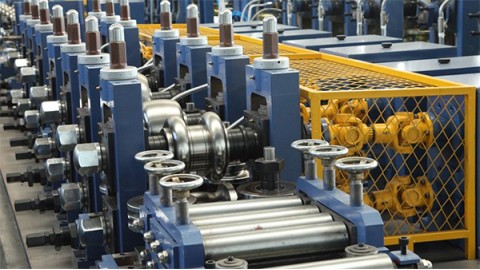Dichloromethane is a compound formed by replacing two hydrogen atoms in the methane molecule with chlorine, with the molecular formula CH2Cl2. It is a colorless, transparent, heavier than water, volatile liquid with an ether-like odor and sweetness. It does not burn, but it forms an explosive mixture when mixed with a high concentration of oxygen. Dichloromethane is slightly soluble in water, miscible with most common organic solvents, and also miscible with other chlorine-containing solvents, ether, ethanol and N,N-dimethylformamide in any proportion. Dichloromethane is insoluble in liquid ammonia at room temperature, and can be quickly dissolved in phenol, aldehyde, ketone, glacial acetic acid, triethyl phosphate, formamide, cyclohexylamine, and ethyl acetoacetate. Relative density 1.3266 (20/4°C). Melting point -95.1°C. Boiling point 40°C. Non-flammable low-boiling solvent, often used to replace flammable petroleum ether, ether, etc., and can be used as dental local anesthetic, refrigerant and fire extinguishing agent. Auto-ignition point 640°C. Viscosity (20°C) 0.43mPa s. Refractive index nD(20°C) 1.4244. The critical temperature is 237°C and the critical pressure is 6.0795MPa. After pyrolysis, HCl and a trace amount of phosgene are generated, which are heated with water for a long time to generate formaldehyde and HCl. Further chlorination can obtain CHCl3 and CCl4.
Pure methylene chloride has no flash point, and solvent mixtures containing equal volumes of methylene chloride and gasoline, solvent naphtha, or toluene are non-flammable, however, when methylene chloride is mixed with acetone or methanol liquid in a ratio of 10:1, Its mixture has a flash point, and the vapor and air form an explosive mixture with an explosion limit of 6.2% to 15.0% (volume). Dichloromethane is the least toxic of methane chloride, and its toxicity is only 0.11% of that of carbon tetrachloride. If methylene chloride is splashed directly into the eyes, it is painful and corrosive. The vapor of dichloromethane has an anesthetic effect. When there is a serious risk of poisoning, it should be removed immediately and moved to fresh air, and some symptoms of poisoning will be relieved or disappeared without causing lasting damage.
Physical and chemical properties of dichloromethane
Chinese name: dichloromethane, English name: Dichloromethane, alias: DCM
1. Properties: Colorless transparent liquid with aromatic odor.
2. Melting point (℃): -95
3. Boiling point (℃): 39.8
4. Relative density (water=1): 1.325 g/ml
5. Relative vapor density (air=1): 2.93
6. Saturated vapor pressure (kPa): 46.5 (20℃)
7. Heat of combustion (kJ/mol): -604.9
8. Critical temperature (℃): 237
9. Critical pressure (MPa): 6.08
10. Octanol/water partition coefficient: 1.25
11. Flash point (℃): no flash point
12. Ignition temperature (℃): 556
13. Upper limit of explosion (%): 22
14. Lower explosion limit (%): 14
15. Solubility: slightly soluble in water, soluble in ethanol and ether.
16. Viscosity (mPa s, 20ºC): 0.425
17. Relative density (25℃, 4℃): 1.3162
18. Fire point (ºC): 662
19. Heat of evaporation (KJ/mol, b.p.): 329.5
20. Heat of fusion (KJ/mol): 4.187
21. Heat of formation (KJ/mol, 25ºC, liquid): 121.54
22. Heat of combustion (KJ/kg, 25ºC, liquid): 558.27
23. Specific heat capacity (KJ/(kg·K), 20ºC): 0.992
24. Conductivity (S/m, 25ºC): 4.3×10-11
25. Vapor pressure (kPa, 0ºC): 19.7
26. Vapor pressure (kPa, 10ºC): 30.6
27. Vapor pressure (kPa, 20ºC): 46.5
28. Vapor pressure (kPa, 30ºC): 68.2
29. Vapor pressure (kPa, 35ºC): 80.00
30. Body expansion coefficient (K-1, 10~40ºC, liquid): 0.00137
31. Refractive index at room temperature (n25): 1.4213
32. Eccentricity factor: 0.192
33. Lennard-Jones parameter (A): 9.951
34. Lennard-Jones parameter (K): 150.5
35. Solubility parameter (J cm-3) 0.5: 20.378
36. van der Waals area (cm2·mol-1): 4.990×109
37. van der Waals volume (cm3 mol-1): 34.710
38. Gas phase standard claimed heat (enthalpy) (kJ mol-1): -95.4
39. Standard entropy of gas phase (J·mol-1·K-1): 270.44
40. Standard free energy of formation in gas phase (kJ mol-1): -68.8
41. Gas phase standard hot melt (J·mol-1·K-1): 50.88
42. Liquid phase standard claimed heat (enthalpy) (kJ mol-1): -124.26
43. Standard entropy of liquid phase (J·mol-1·K-1): 178.7
44. Liquid phase standard free energy of formation (kJ mol-1): -70.42
45. Liquid phase standard hot melt (J·mol-1·K-1): 100.0
Uses: industrial cleaning, degreasing agent
Solubility: Insoluble in water, soluble in phenol, aldehyde, ketone, glacial acetic acid, triethyl phosphate, ethyl acetoacetate, cyclohexylamine. Miscible with other chlorinated hydrocarbon solvents ethanol, ether and N,N-dimethylformamide.
Molecular structure data
1. Molar refractive index: 16.38
2. Molar volume (m3/mol): 67.8
3. Isotonic specific volume (90.2K): 148.8
4. Surface tension (dyne/cm): 23.1
5. Polarizability: 6.49
Security Information
Dangerous goods signs: Xn, T, F, N, C
Hazard category code: 40-39/23/24/25-23/24/25-11-67-36/37/38-68/20/21/22-20/21/22-50-37-34
Safety Instructions: 23-24/25-36/37-45-16-7-26-61-36/37/39
Dangerous Goods Transport Number: UN 1593 6.1/PG 3
WGK Germany: 2
RTECS No.: PA8050000
F: 3-10
Hazard Note: Harmful
HazardClass: 6.1
PackingGroup: III
Hazardous Substances data: 75-09-2 (Hazardous Substances Data)
numbering system
CAS Number: 75-09-2
MDL number: MFCD00000881
EINECS Number: 200-838-9
RTECS No.: PA8050000
BRN number: 1730800
PubChem number: 24856423
Computational Chemistry Data
1. Reference value for hydrophobic parameter calculation (XlogP): 1.5
2. Number of hydrogen bond donors: 0
3. Number of hydrogen bond acceptors: 0
4. Number of rotatable chemical bonds: 0
5. Topological molecular polar surface area (TPSA): 0
6. Number of heavy atoms: 3
7. Surface charge: 0
8. Complexity: 2.8
9. Number of isotope atoms: 0
10. Determine the number of atomic stereocenters: 0
11. Uncertain number of atomic stereocenters: 0
12. Determine the number of chemical bond stereocenters: 0
13. Uncertain number of chemical bond stereocenters: 0
14. Number of covalent bond units: 1
Chemical Properties and Stability
1. The toxicity is very small, and it wakes up quickly after being poisoned, so it can be used as an anesthetic. Irritating to skin and mucous membranes. Oral LD50 of young adult rats: 1.6mL/kg. The maximum allowable concentration in the air is 500×10-6. Wear a gas mask during operation, leave the scene immediately after discovering poisoning, and treat symptomatically. The smallest among the chlorides of methane. The vapor is highly anesthetic, and a large amount of inhalation can cause acute poisoning, with symptoms such as nasal pain, headache, and vomiting. Chronic poisoning can cause dizziness, fatigue, loss of appetite, impaired hematopoietic function, and decreased red blood cells. Contact of liquid dichloromethane with skin causes dermatitis. Rats died after inhaling vapor with a concentration of 90.5g/m3 for 90 minutes. The olfactory threshold concentration is 522mg/m3, and the maximum allowable concentration in the workplace is 1740mg/m3.
2. Stability: stable
3. Incompatible substances: alkali metals, aluminum
4. Conditions to avoid: light, humid air
5. Polymerization hazard: no polymerization
6. Decomposition products: hydrogen chloride, phosgene
The role and use of dichloromethane
1. Dichloromethane is used in the manufacture of safety film film and polycarbonate, and the rest is used as paint solvent, metal degreasing agent, gas smoke propellant, polyurethane foaming agent, mold release agent, and paint remover.
2. Dichloromethane is a colorless liquid. It is used as a reaction medium in the pharmaceutical industry for the preparation of ampicillin, amoxicillin and pionemycin, etc. It is also used as a solvent in film production, a petroleum dewaxing solvent, and aerosol propellant. Agents, organic synthesis extractants, foaming agents for the production of foamed plastics such as polyurethane, and metal cleaning agents.
3. Dichloromethane is mainly used in film production and pharmaceutical fields in China. Among them, the consumption for film production accounts for 50% of the total consumption, the pharmaceutical industry accounts for 20% of the total consumption, the cleaning agent and chemical industry consumption accounts for 20% of the total consumption, and other aspects account for 10%. Dichloromethane is also used as a refrigerant in industrial refrigeration systems, but it is very harmful, and can produce highly toxic phosgene when it comes into contact with open flames or hot objects. In case of humid air, it can be hydrolyzed to generate a small amount of hydrogen chloride, and light can also promote hydrolysis and increase the corrosiveness to metals.
4. It is used for grain fumigation and refrigeration of low-pressure freezers and air-conditioning units. It is used as an auxiliary blowing agent in the production of polyether urethane foam, and as a blowing agent for extruded polysulfone foam.
5. Dichloromethane is also the substance used to make decaffeinated coffee. The coffee is first boiled to dissolve the caffeine and float to the surface, and then methylene chloride is used to remove the caffeine.
6. In addition to organic synthesis, this product is also widely used for cellulose acetate film formation, triacetate cellulose spinning, petroleum dewaxing, aerosol and antibiotic, vitamin, steroid production solvent, and metal surface Paint cleaning, degreasing and film release agent.
7. It is used for grain fumigation and refrigeration of low-pressure freezers and air-conditioning units. It is used as an auxiliary blowing agent in the production of polyether urethane foam and as a blowing agent for extruded polysulfone foam.
8. Used as solvent, extractant and mutagen. For plant genetic research.
9. It has good dissolving power. It is a low-boiling solvent with low toxicity and non-flammability in common industrial solvents. It has good dissolving power for many resins, paraffins and fats. Mainly used as paint remover, petroleum dewaxing solvent, extractant for thermally unstable substances, extractant for lanolin from wool and edible oil from coconut, and solvent for cellulose triacetate film. It is also widely used in the manufacture and processing of acetate fiber and vinyl chloride fiber, as well as in the manufacture of fire extinguishing agents, refrigerants, and urotropine.
10. Used in the electronics industry. Often used as a cleaning and degreasing agent.
11. It is widely used as a flame retardant solvent due to its extremely low boiling point. In addition to being used as a washing solvent for aero-engines, precision machinery, etc., it can also be used as a peeling agent for coatings, and can also be properly mixed with other solvents for various industrial washing.
12. It is also used as ethyl ester fiber solvent, dental local anesthetic, refrigerant and fire extinguishing agent, etc. It is a common eluent for chromatographic separation and a common solvent for extraction and separation.
13. Used as a solvent in resin and plastic industries.
Dichloromethane is harmful to human health
The product has anesthesia, mainly damage the central nervous system and respiratory system. The main route of human exposure is inhalation. High concentrations of methylene chloride have been measured in indoor production environments when methylene chloride is used as a paint remover. Doses are much lower in the general population through exposure to ambient air, drinking water, and food. It is estimated that about 80% of the world production of methylene chloride is released into the atmosphere, but the rapid rate of photolysis of this compound makes it impossible to accumulate in the atmosphere. Its initial degradation products are phosgene and carbon monoxide, which are further converted into carbon dioxide and hydrochloric acid. When methylene chloride is present in surface water, most of it will evaporate. In the presence of oxygen, it is readily biodegradable, so bioaccumulation seems unlikely. But its behavior in soil has yet to be determined.
★ Aspiration hazard
1. In very high concentrations, it will cause liver and kidney damage. There have also been reports of repeated exposure to 500-3600 ppm causing brain damage.
2. At 500-1000 ppm for 1-2 hours, it may cause mild depression of the central nervous system, such as: dizziness, dizziness, nausea, numbness of hands and feet, fatigue, inability to concentrate and decreased coordination.
3. Exposure to very high concentrations may cause loss of consciousness and death.
★ Harmful to skin
Liquid can irritate the skin. Severe irritation may occur if it gets into gloves, shoes, or tight clothing.
★ Harmful to eyes
1. Liquids and high-concentration vapors may cause irritation.
2. Liquid may cause transient irritation of the cornea.
★ Carcinogenicity
Three studies showed no signs of increased cancer in long-term exposed workers, but IARC listed it as a suspected carcinogen.
Hazards of methylene chloride to the environment
The substance may be hazardous to the environment and accumulates in groundwater. Special attention should be paid to aquatic life. Attention should also be paid to air pollution.
Precautions for storage and transportation of dichloromethane
1. Avoid generating droplets when handling and wear appropriate personal protective equipment.
2. Avoid letting released vapors and mist droplets enter the air in the work area.
3. Work in a well-ventilated area and use the minimum dosage.
4. Emergency response equipment must be readily available for fire fighting and spill handling.
5. Hazardous residues may remain in empty storage containers.
6. Do not operate this item near welding, flames or hot surfaces.
7. Store in a cool, dry, well-ventilated place without direct sunlight.
8. Store away from heat, flame and incompatible materials, such as strong oxidants, strong acids, and nitric acid.
9. Store in an appropriate labeled container.
10. Unused containers and empty buckets should be tightly covered.
11. Avoid container damage and regularly inspect storage drums for defects such as breakage or spillage.
12. Containers are galvanized or lined with Phenolic synthetic resin to reduce the possibility of methylene chloride decomposition.
13. Limited storage.
14. Post warning signs where appropriate.
15. The storage area should be separated from the densely populated work area, and personnel access to the area should be restricted.
16. Use plastic hoses that are regulated for substances to unload poisons.
17. Substances may accumulate static electricity and may burn. Store in a cool, dry, well-ventilated place without direct sunlight.
Packaging, storage and transportation: sealed in galvanized iron barrels, 50kg per barrel, which can be transported by train tankers and automobiles. It should be stored in a cool, dark, dry, well-ventilated place, and pay attention to moisture-proof.
Precautions for Dichloromethane Leakage Handling
★ Personnel
1.Restrict personnel from approaching the contaminated area until it is completely cleaned up.
2. Make sure clean-up is done by trained personnel.
3. Wear appropriate personal protective equipment.
4. Ventilate the area.
5. Extinguish or remove all ignition sources.
6. Report to government safety, health and environmental protection related units.
★ Environmental aspects
1. Immediately isolate non-related personnel at least 16 meters away in the event of a spill;
2. When a large amount of leakage occurs, personnel should be evacuated to 30 meters away from the wind;
2. When the fire is burning, people should be evacuated to a distance of 260 meters;
★ Cleaning method
1. Do not touch the spilled material.
2. Avoid spills entering sewers, gutters or confined spaces.
3. Find ways to stop or reduce spills under safe conditions.
4. Contain the spill with sand, earth or other absorbent material that does not react with the spilled material.
5. Small spills: Absorb with absorbent material that will not react with spillage. Contaminated absorbent material is equally hazardous as spillage and must be placed in a properly labeled and capped container. Flush spill area with water. Small spills can be diluted with plenty of water.
6. Large spills: Construct dikes or dig pits for containment. Cover with foam to reduce vapor hazards. Transfer it to a tanker or a special collector with a pump, and recycle it or transport it to a waste disposal site for disposal.
Analysis method of methylene chloride content
Dichloromethane can be separated by dibutyl phthalate (DBP), then detected by GC with TCD and quantified by comparison with standard dichloromethane.
Reagent: carrier gas, helium (>99.5%); carrier is white diatomaceous earth 6201 (40-60 mesh) or equivalent; stationary phase, DBP (in ether); standard sample, chromatographically pure dichloromethane; instrument, Gas chromatograph with TCD; column, 3m × 3~4mm (inner diameter) stainless steel column.
Conditions: stationary phase, 20%: DBP/6021 vaporization temperature, 100℃; detection temperature, 100℃; carrier gas flow, 70ml/min, column temperature 70℃; TCD bridge current, 200mA~ injection volume, <20μl . Retention time (R) of other chlorinated solvents related to dichloromethane: monochloromethane 0.15; monochloroethane 0.34; 1,1-dichloroethylene 0.59; monochloropropene, 0.85; carbon tetrachloride 1.86; chloroform 2.47.
Industrial preparation method of dichloromethane
1. Natural gas chlorination method Natural gas reacts with chlorine gas, and after absorbing hydrogen chloride by water to produce hydrochloric acid, the residual trace hydrogen chloride is removed with lye, and then dried, compressed, condensed and distilled to obtain the finished product, wherein chlorine gas is 100% 4000, natural gas ( Standard conditions), methane content 97% 1000m3/t, liquid caustic soda 100% 274.
2. Chlorination method of methyl chloride Methyl chloride reacts with chlorine under 4000kW illumination to generate dichloromethane, which is subjected to alkali washing, condensation, condensation, drying and rectification to obtain the finished product. The main by-product is chloroform. Methyl chloride ≥98% 746, liquid chlorine ≥99.5% 854, caustic soda 30% 221.
Industry is generally synthesized by the chlorination of methane. Methane is chlorinated to obtain a bunch of mixtures including four kinds of chloromethanes, but due to the relatively large distance between their respective boiling points, they can be easily separated and purified by ordinary fractional distillation techniques.
3. It is generally obtained by further chlorination of by-product methyl chloride in pesticide production. Chlorination can be done by photo-chlorination or thermal chlorination. The reaction temperature of thermal chlorination should reach 400 °C, which is difficult to produce. Generally, photo-chlorination is used. Reaction equation: H3Cl+Cl2→CH2Cl2+HCl.




